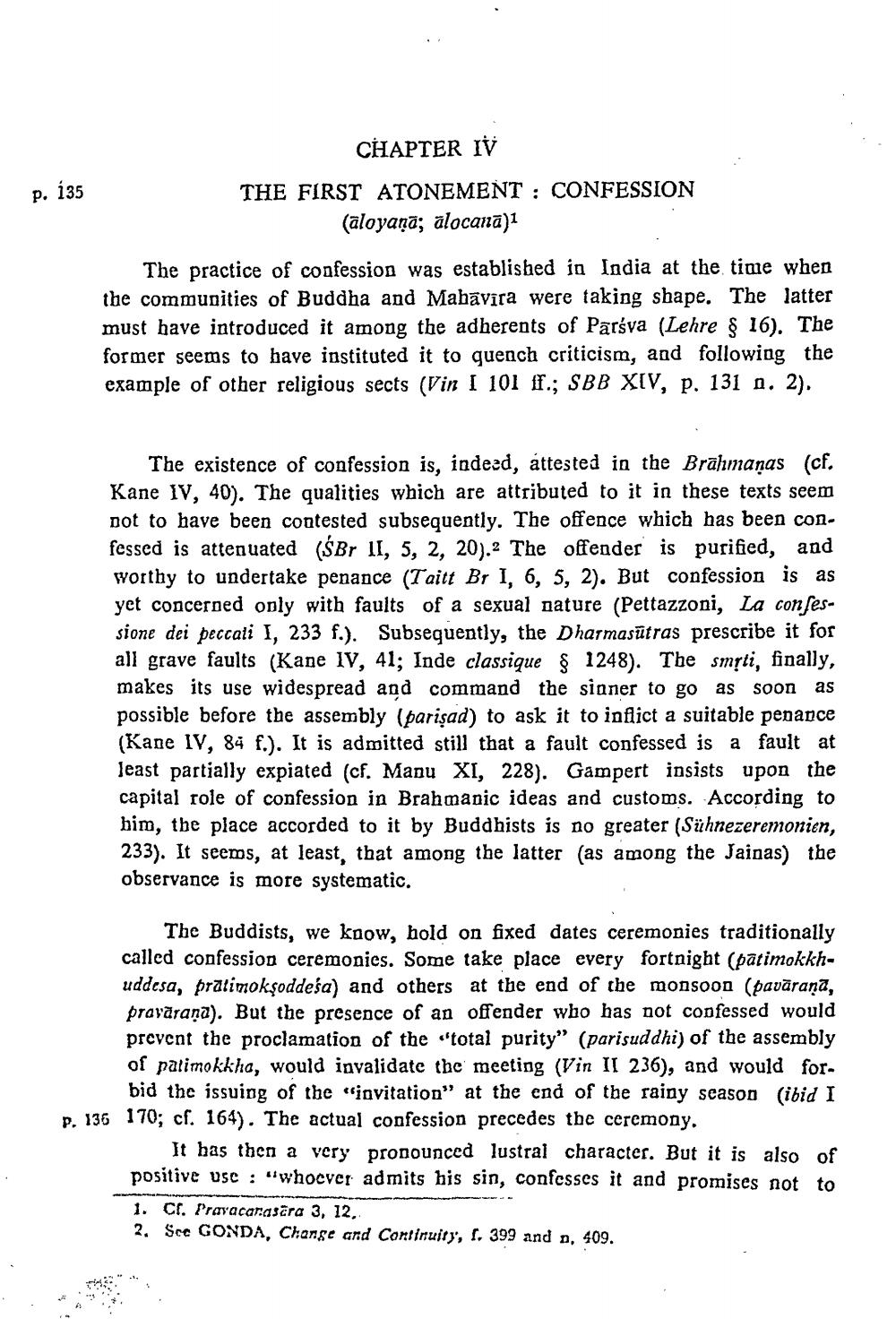________________
p. 135
CHAPTER IV THE FIRST ATONEMENT : CONFESSION
(aloyanā; alocanā)1
The practice of confession was established in India at the time when the communities of Buddha and Mahāvīra were taking shape. The latter must have introduced it among the adherents of Pārsva (Lehre § 16). The former seems to have instituted it to quench criticism, and following the example of other religious sects (Vin I 101 ff.; SBB XIV, p. 131 9. 2).
The existence of confession is, indeed, attested in the Bralimanas (cf. Kane IV, 40). The qualities which are attributed to it in these texts seem Dot to have been contested subsequently. The offence which has been confessed is attenuated (ŚBr II, 5, 2, 20).2 The offender is purified, and worthy to undertake penance (Taitt Br I, 6, 5, 2). But confession is as yet concerned only with faults of a sexual nature (Pettazzoni, La con fessione dei peccati I, 233 f.). Subsequently, the Dharmasūtras prescribe it for all grave faults (Kane IV, 41; Inde classique § 1248). The smộti, finally, makes its use widespread and command the sianer to go as soon as possible before the assembly (parisad) to ask it to inflict a suitable penance (Kane IV, 84 f.). It is admitted still that a fault confessed is a fault at least partially expiated (cf. Madu XI, 228). Gampert insists upon the capital role of confession in Brahmanic ideas and customs. According to him, the place accorded to it by Buddhists is no greater (Sühnezeremonien, 233). It seems, at least, that among the latter (as among the Jainas) the observance is more systematic.
The Buddists, we know, hold on fixed dates ceremonies traditionally called confession ceremonies. Some take place every fortnight (patimokkhuddesa, pralimoksoddesa) and others at the end of the monsoon (pavārana, pravărana). But the presence of an offender who has not confessed would prevent the proclamation of the "total purity" (parisuddhi) of the assembly of patimokkha, would invalidate the meeting (Vin II 236), and would for
bid the issuing of the invitation" at the end of the rainy season (ibid I p. 136 170; cf. 164). The actual confession precedes the ceremony.
It has then a very pronounced lustral character. But it is also of positive use : "whoever admits his sin, confesses it and promises not to 1. Cl. Pravacarasēra 3, 12, 2. Sec GONDA, Change and Continuity, f. 399 and n. 409.




